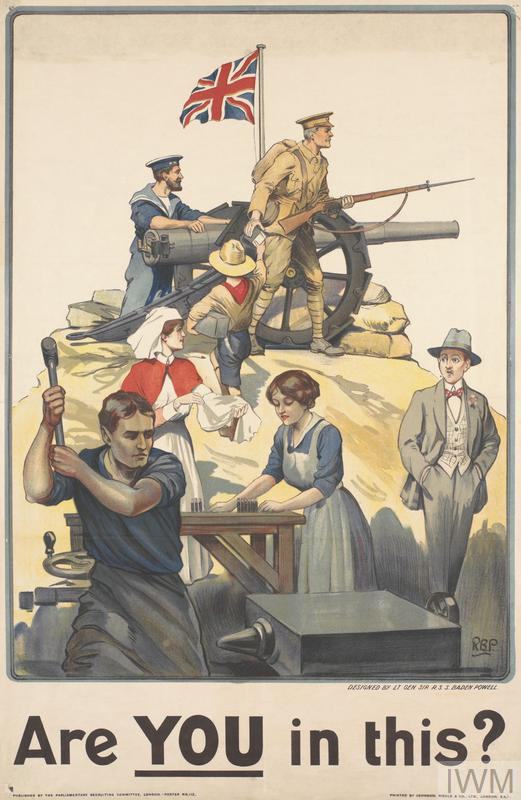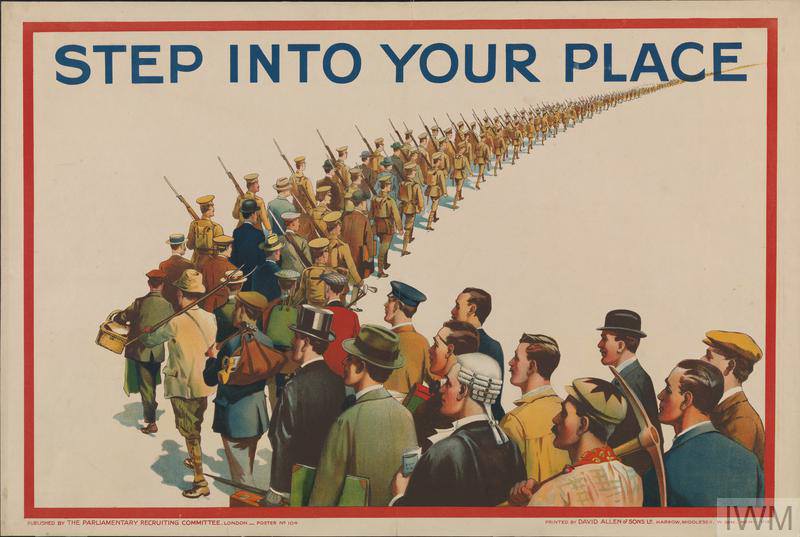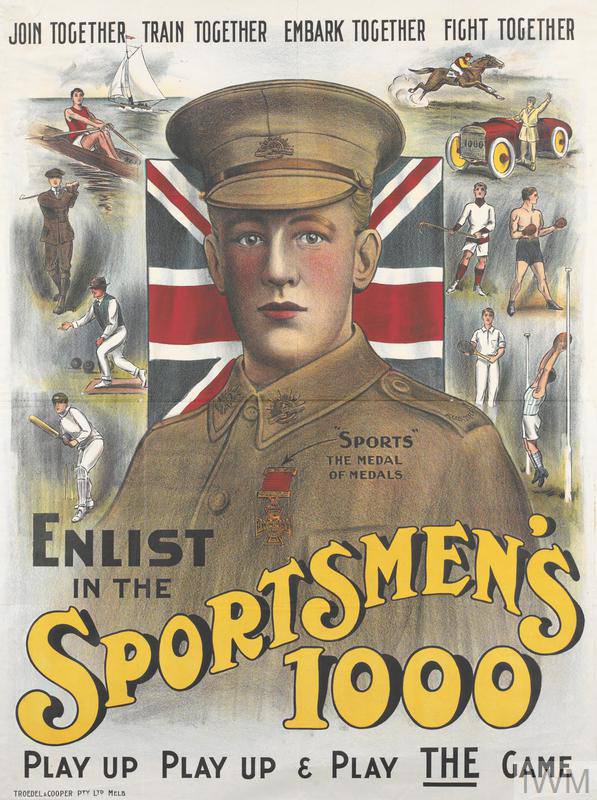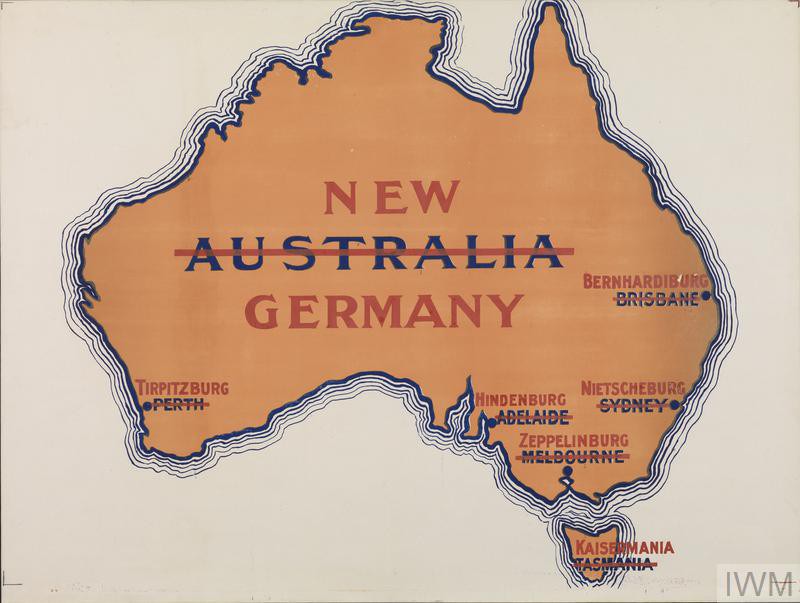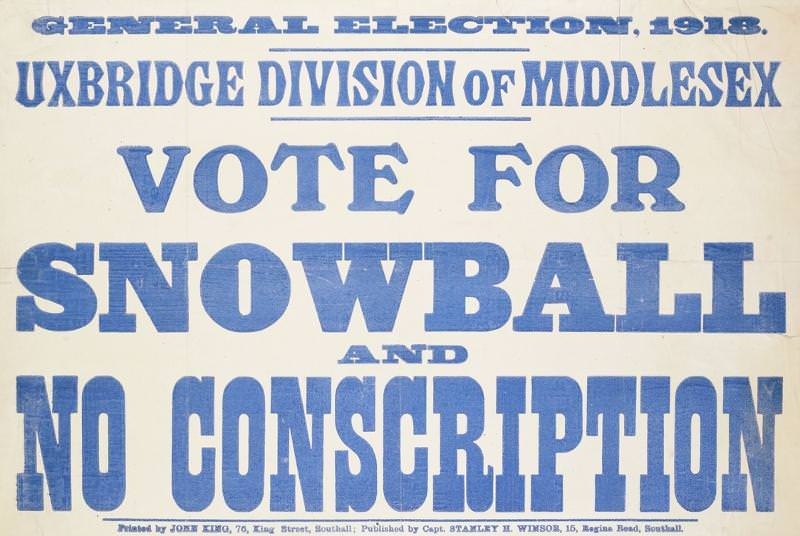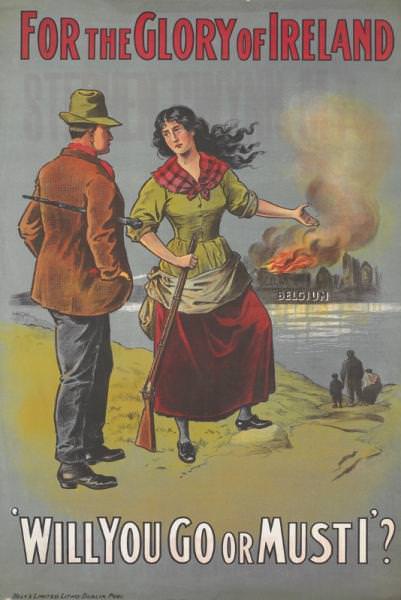Recruitment posters have been seen as a driving force in bringing in more than a million new soldiers during WWI. These posters were used by the Canadian, British, and US governments to entice men to join the armed forces. These posters told men that it was their duty to join, that they would feel proud if they did, and guilty or embarrassed if they didn’t.
In a country without radio or television, posters became an important medium of mass communication throughout World War I. Newspapers were the only alternative form of mass communication. However, they lacked color printing capabilities. Posters provided the color, power, and size needed for simple messages to be delivered to a mass audience in a most powerful way.
In recruitment posters, the imagery, style, and graphics are taken directly from the advertising industry. The themes employed to recruit included patriotism, nationalism, xenophobia, comradeship, revenge, a desire to protect women and loved ones, the fear of being left behind, and the opportunity to avoid accusations of cowardice.
#1 Britons. Join Your Country’s Army!
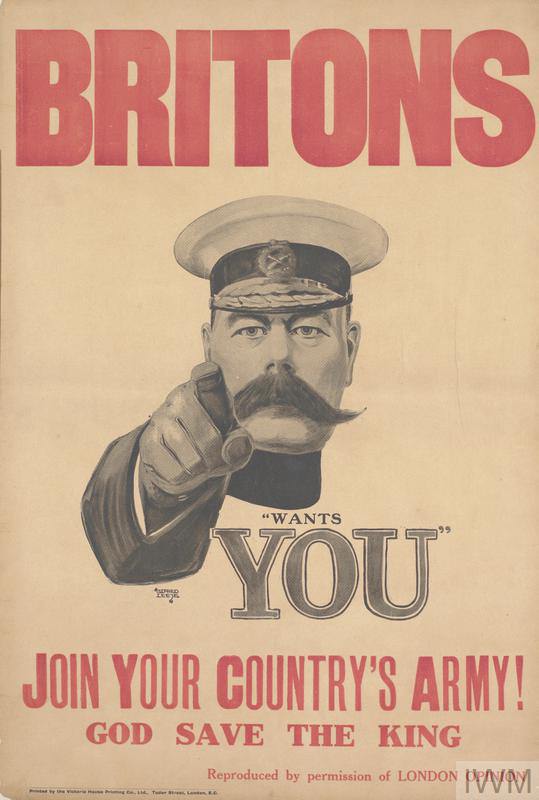
The poster shows Lord Kitchener, who is appealing to the British public to join the British army. A version of the postcard was produced in 1914, but it became a truly iconic product after the war, when it wasn't widely spread outside of London. This striking visual appeal was picked up by other artists, including in the USA, where Uncle Sam replaced Kitchener.
#2 Women of Britain say ‘Go!’
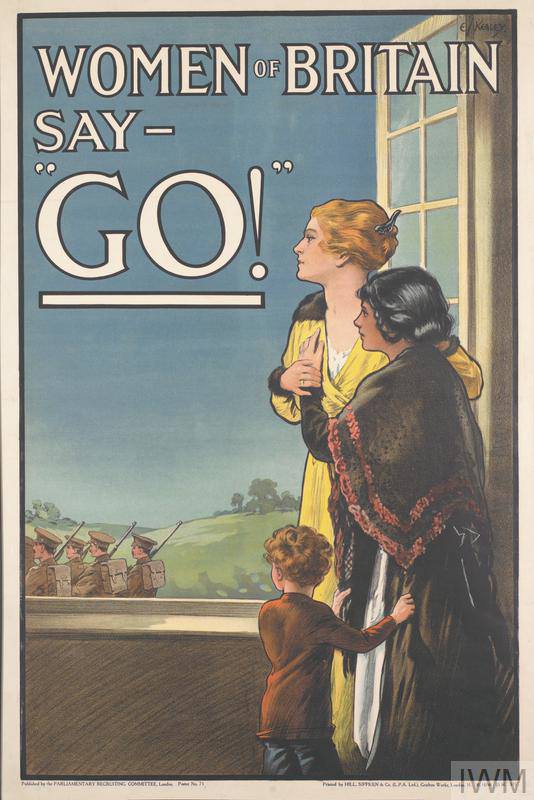
A poster advertising the British army clearly demonstrates how commercial advertising techniques are being applied to the campaign aimed at enticing more men to join the armed forces, while showing that women and children should be protected. Despite this, women had more paid jobs and more jobs to choose from after the First World War.
#3 WOMEN URGENTLY WANTED FOR THE W.A.A.C.
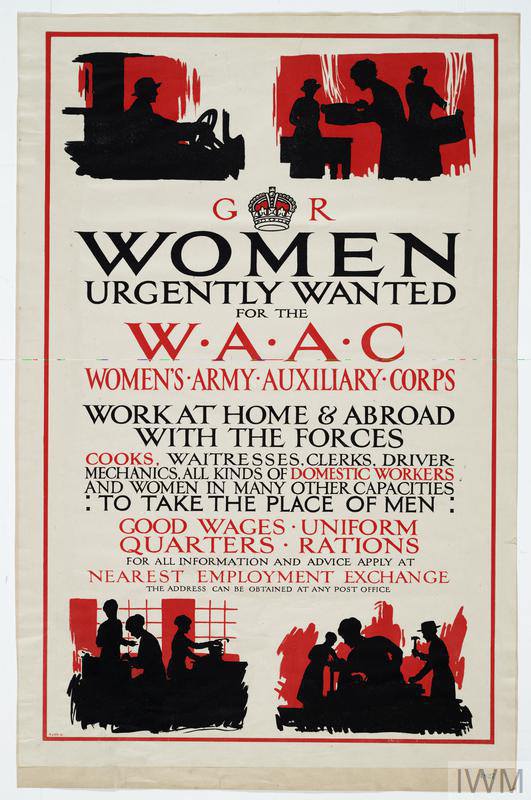
The Women’s Army Auxiliary Corps (WAAC) was established in December 1916. In France, many women joined the Corps to perform non-combatant tasks, allowing more men to serve in the front lines. The first group of 14 women arrived on the Western Front on 31 March 1917. Ultimately, 9,000 women served with the unit in France.
#4 Are You in This?
#5 Step Into Your Place
#6 Sportsmen’s One-thousand
#7 This Soldier is Defending India
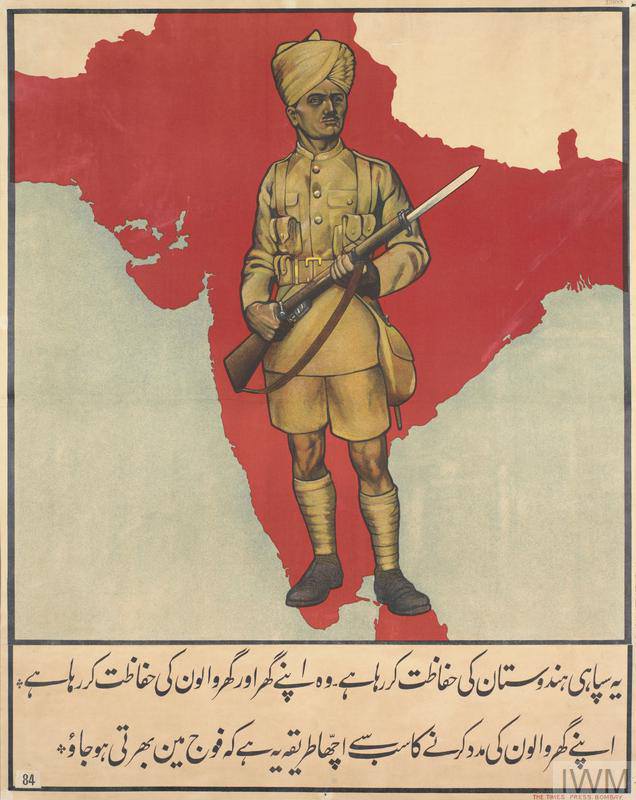
Each region could add text in its own language to the bottom of this Indian recruitment poster. Adapting it to meet the needs of the area to which the poster was going made it very flexible. In India, where recruitment campaigns are conducted differently, recruitment posters were less common. During that period India was still largely a rural society, and poster campaigns were more common in urban areas.
#8 ? [The Question Mark]
![? [The Question Mark]](https://www.bygonely.com/wp-content/uploads/2021/07/World_War_I_Recruiting_posters_8.jpg)
During the First World War, the Government of Australia conducted this recruitment campaign as its last recruitment drive. The painting depicts an ape-like monster wearing a German helmet, or pickelhaube, a symbol of German militarism. Graphic imagery in the poster was particularly forceful and very different from that used in British posters, and it was part of a sophisticated campaign.
#9 New Germany
#10 Irishmen Avenge the Lusitania
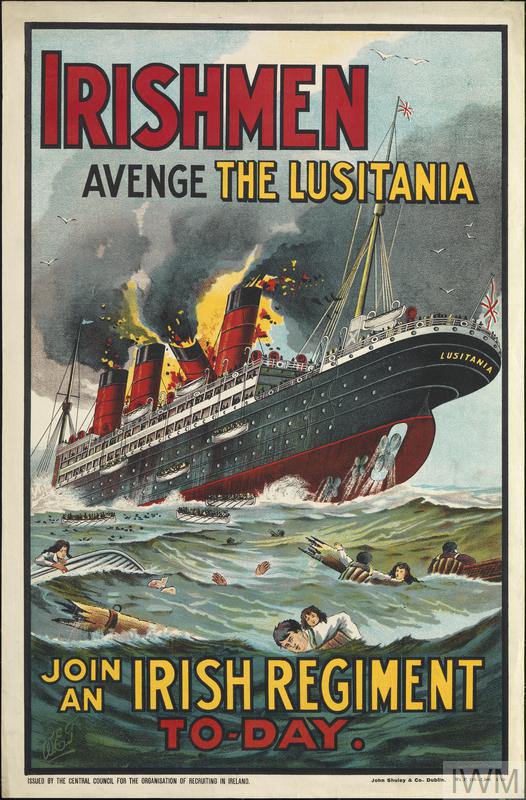
In May 1915, a German U-boat torpedoed and sank the passenger liner RMS Lusitania. Despite the fact that the ship was carrying military supplies, over 1000 passengers lost their lives in the incident, which became one of the most controversial acts of the war. In the poster, the incident is used to encourage Irish men to enlist, in order to avenge the sinking of the ship.
#11 Remember Scarborough
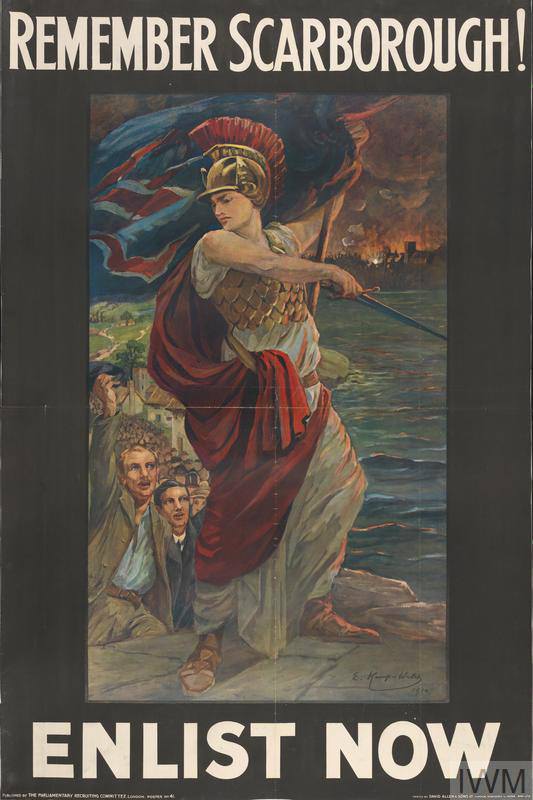
On the morning of 16 December 1914, the North Sea ports of Hartlepool, West Hartlepool, Whitby and Scarborough were bombarded by the German First High Seas Fleet Scouting Group. 137 people lost their lives and 592 people were wounded. This poster uses the incident to try and encourage people to enlist, but the British public and newspapers were also outraged at the Royal Navy for not protecting the towns.
#12 Who Can Beat this Plucky Four?
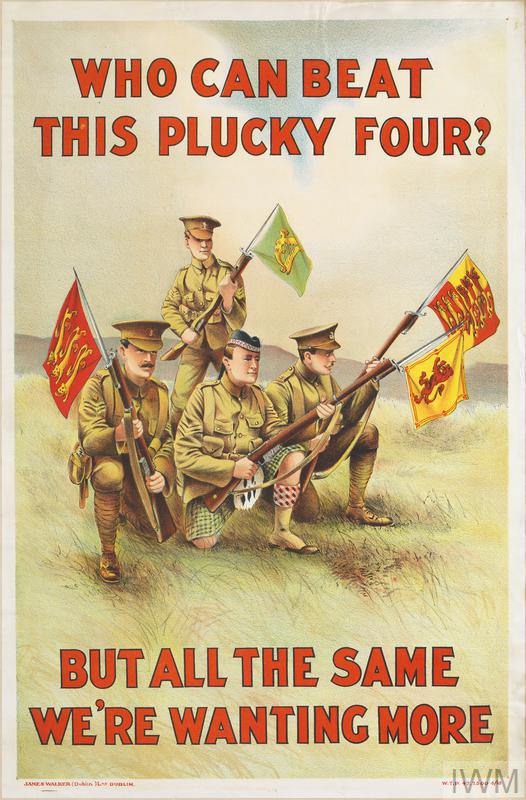
An Irish soldier stands behind English, Scottish and Welsh troops in this poster from 1915. Men were encouraged to enlist and join the war effort with this poster in Ireland, which was pursuing independence. The poster was especially aimed at Protestants and those who support unionism in this instance.
#13 FORWARD!
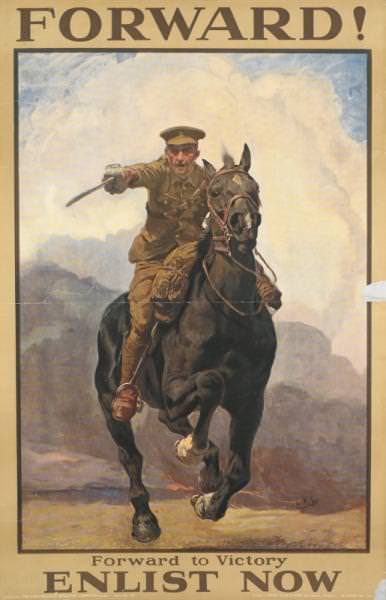
During the recruitment campaign, this poster was the last to use an image and was produced in September 1915. It was inevitable that the introduction of conscription was a necessity by the time it was produced. Nonetheless, posters like this were still used to encourage people to enlist before they became conscripts.
#14 The Military Service Act
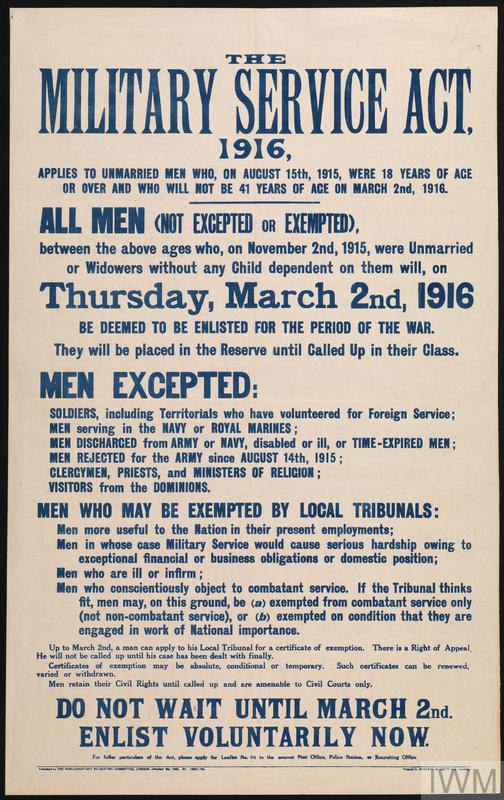
Conscription became mandatory for military men in 1916, as this poster indicates. As part of the new law, men are encouraged to enlist before March 2nd, when the act came into effect. Since the introduction of the act, posters have become more about providing information than trying to be persuasive.
#15 Your King and Country Need You!
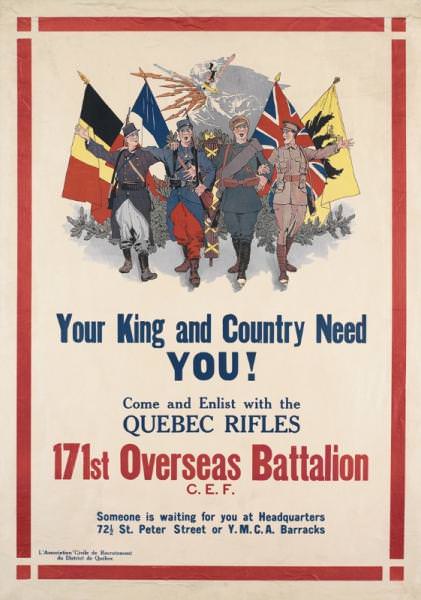
In this poster, Canadian Expeditionary Force members are encouraged to enlist with the Quebec Rifles. It depicts Belgium, France, Russia, and Britain as allies of a war effort, although the poster's title suggests otherwise. The poster encourages people to fight for universal values and causes.


